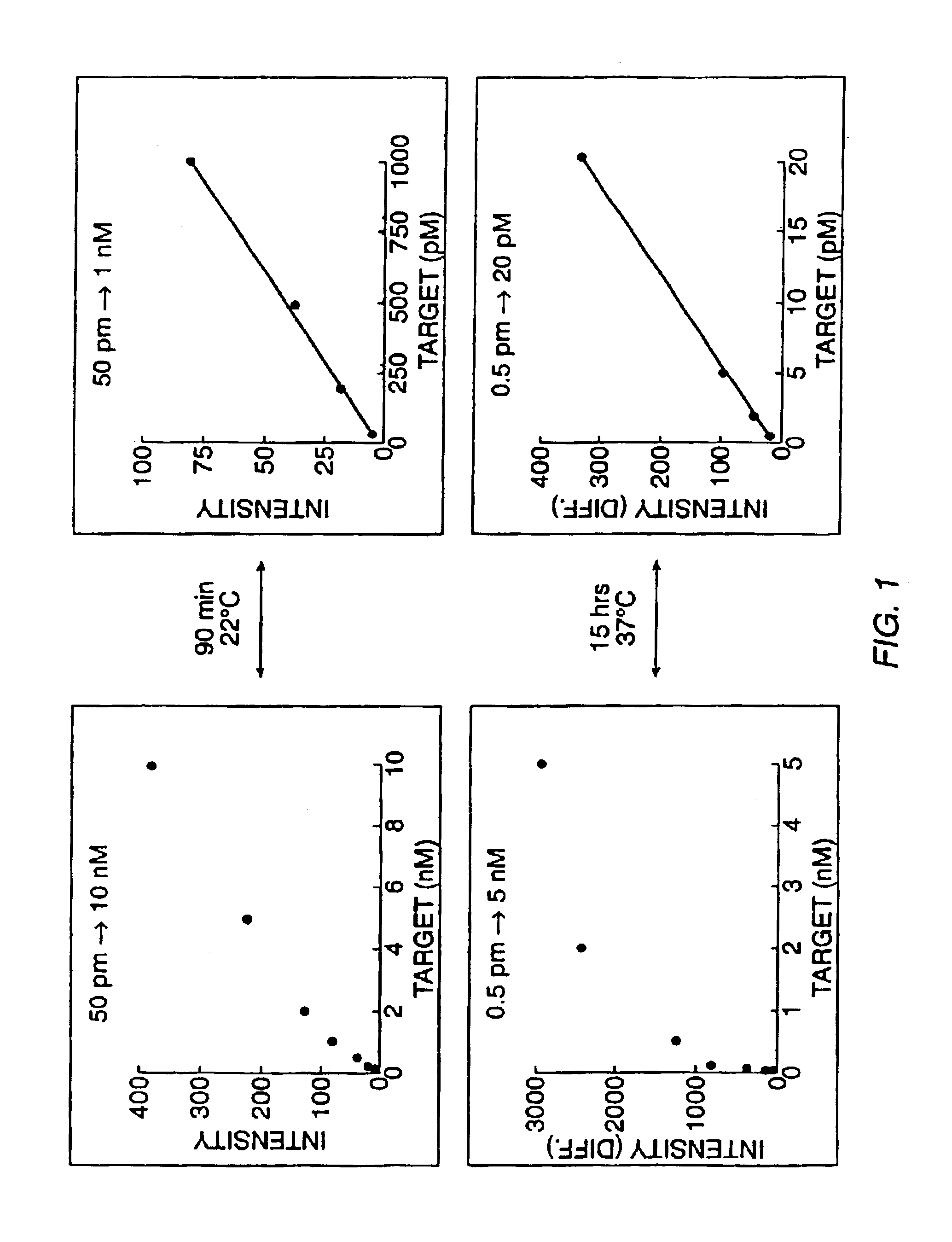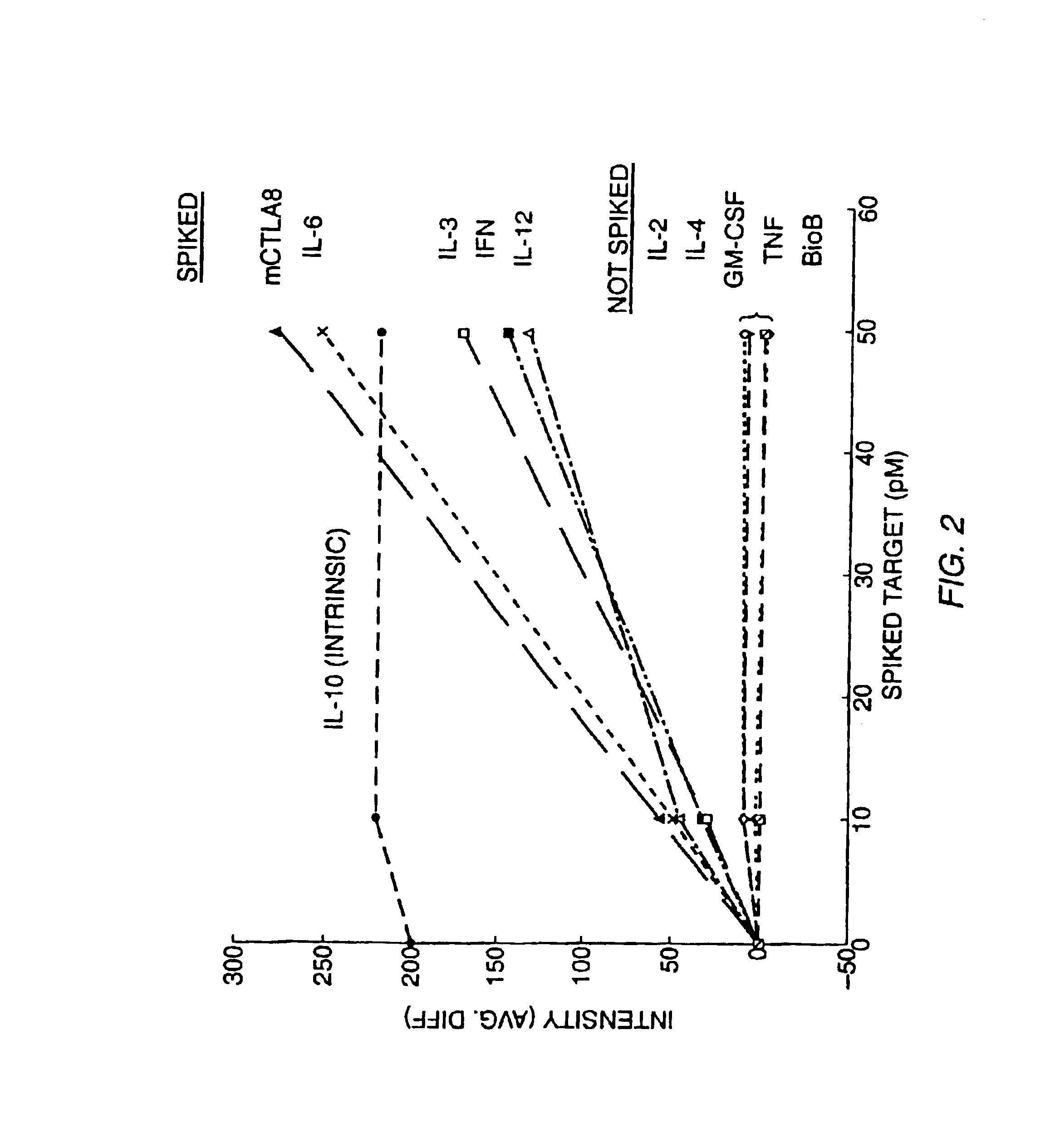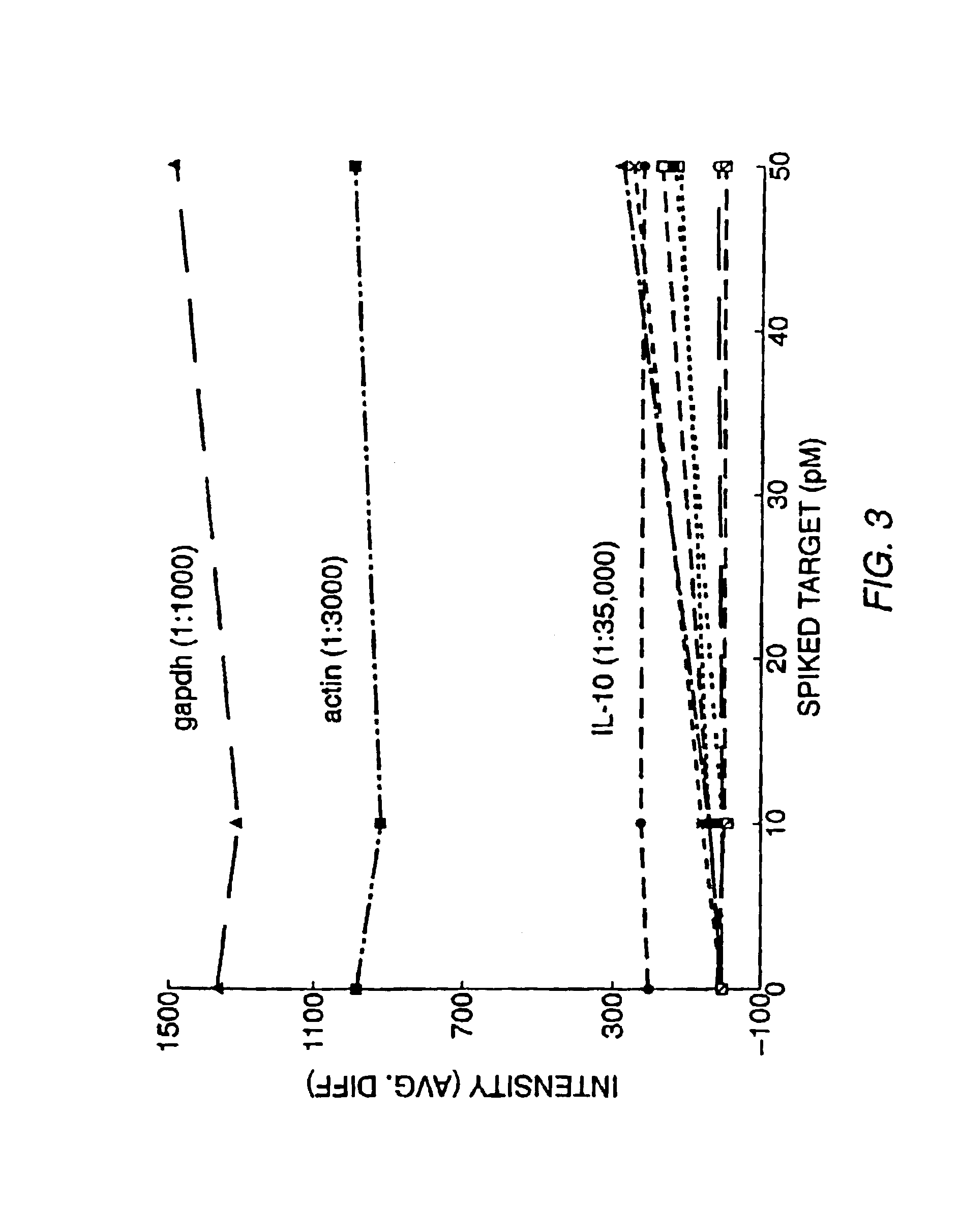Expression monitoring by hybridization to high density oligonucleotide arrays
a technology of high density oligonucleotide and expression monitoring, which is applied in the field of expression monitoring by hybridization to high density oligonucleotide arrays, can solve the problems of difficult or impossible differentiation of two or more gene products of approximately the same molecular weight, and inability to provide an enabling method for using arrays of immobilized probes for this purpose, etc., and achieves small variations in expression levels.
- Summary
- Abstract
- Description
- Claims
- Application Information
AI Technical Summary
Benefits of technology
Problems solved by technology
Method used
Image
Examples
example 1
Detection of the Expression Levels of Target Genes
[0144]Experiments were designed to evalutate the specificity of hybridization, the relationship between hybridization signal and concentration of target nucleic acid, and the quantifiability of RNA detection at low concentration levels. These experiments involved hybridizing labeled RNA from a number of preselected genes (IL-2, IL-3, IL4, IL-6, IL-10, IL-12p40, GM-CSF, IFN-γ, TNF-α, mCTLA8, β-actin, GAPDH, IL-11 receptor, and Bio B) to a high density oligonucleotide probe array comprising a large number of probes complementary to subsequences of these genes (see, Section B, below for a description of the array) in the presence or absence of an RNA sample transcribed from a cDNA library. The target genes were hybridized to the high density probe array either individually, together, or individually or together in the presence of labeled RNA transcribed from a murine cDNA library as described below.
[0145]A) Preparation of Labeled RNA.
[0...
PUM
| Property | Measurement | Unit |
|---|---|---|
| Tm | aaaaa | aaaaa |
| temperature | aaaaa | aaaaa |
| pH | aaaaa | aaaaa |
Abstract
Description
Claims
Application Information
 Login to View More
Login to View More - R&D
- Intellectual Property
- Life Sciences
- Materials
- Tech Scout
- Unparalleled Data Quality
- Higher Quality Content
- 60% Fewer Hallucinations
Browse by: Latest US Patents, China's latest patents, Technical Efficacy Thesaurus, Application Domain, Technology Topic, Popular Technical Reports.
© 2025 PatSnap. All rights reserved.Legal|Privacy policy|Modern Slavery Act Transparency Statement|Sitemap|About US| Contact US: help@patsnap.com



